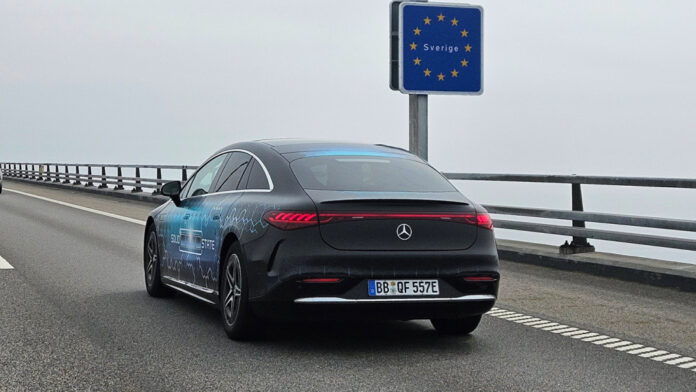“The solid-state battery is poised to revolutionize the electric vehicle landscape.” As the automotive industry grapples with the limitations of current lithium-ion technology, a new contender emerges on the horizon. Solid-state batteries promise higher energy density, faster charging times, and enhanced safety features, igniting a competitive race among manufacturers. With several prototypes already hitting the roads, including models from luxury brands, the question remains: which company will lead this transformation?
The stakes are high as traditional automakers and new entrants alike invest heavily in solid-state technology. Industry experts predict that this innovation could significantly reduce range anxiety for consumers, a major barrier to widespread electric vehicle adoption. Furthermore, the potential for lower production costs and improved sustainability makes solid-state batteries an attractive option for manufacturers. As the market anticipates the first commercial models, the implications for consumers and the environment could be profound.
Transforming Energy Storage: the Solid-state Advantage
Solid-state batteries represent a significant advancement over conventional lithium-ion systems. Unlike their predecessors, which use liquid electrolytes, solid-state batteries utilize solid electrolytes, resulting in a more stable and efficient energy storage solution. This fundamental shift not only enhances energy density but also reduces the risk of fires and thermal runaway, a critical safety concern for electric vehicles. Furthermore, the potential for higher energy capacity means that vehicles could travel longer distances on a single charge, addressing one of the primary challenges facing electric vehicle adoption today.
Recent developments highlight the promising capabilities of solid-state technology. For instance, prototypes from leading manufacturers such as Mercedes and BMW have demonstrated impressive performance metrics, with some achieving energy densities exceeding 300 Wh/kg. This advancement could translate to electric vehicles with ranges of over 400 miles, a significant improvement compared to current models. Additionally, the faster charging capabilities of solid-state batteries could allow users to recharge their vehicles in mere minutes, similar to refueling a gasoline-powered car.
The implications of this technology extend beyond just performance; they also encompass economic and environmental factors. As manufacturers scale production, the costs associated with solid-state batteries are expected to decrease, making electric vehicles more accessible to a broader audience. Moreover, the solid-state design is more conducive to recycling, potentially reducing the environmental impact of battery disposal. In this context, the transition to solid-state batteries could play a critical role in achieving sustainability goals within the automotive sector.
The Race for Dominance: Key Players in Solid-state Development
As the solid-state battery market heats up, several key players are vying for leadership. Established automotive giants like Toyota and Volkswagen are investing heavily in research and development, while startups are emerging with innovative approaches. Toyota, for instance, has announced plans to introduce solid-state batteries in its vehicles by 2025, while Volkswagen is collaborating with external partners to accelerate its development timeline. This competitive landscape is driving rapid advancements as companies seek to capitalize on the potential of this technology.
In addition to traditional automakers, tech companies are also entering the fray. Firms like QuantumScape are gaining attention for their groundbreaking work on solid-state battery technology. QuantumScape has reported significant progress in developing a solid-state battery that can deliver high energy density while maintaining safety and longevity. This influx of diverse players is likely to spur innovation and accelerate the adoption of solid-state batteries in the market.
The implications of this competition extend beyond product offerings. As manufacturers race to bring solid-state batteries to market, consumers can expect a wider array of electric vehicles with enhanced features and performance. The pressure to deliver on promises will also encourage companies to prioritize safety and sustainability, ultimately benefiting the environment and enhancing consumer trust in electric vehicles.
Challenges Ahead: Overcoming Barriers to Adoption
Despite the promising outlook for solid-state batteries, several challenges remain before they can achieve widespread adoption. One significant hurdle is the current state of production technology. While prototypes demonstrate impressive capabilities, scaling up production to meet consumer demand poses logistical and financial challenges. Manufacturers will need to invest in new manufacturing processes and facilities to ensure that solid-state batteries can be produced efficiently and affordably.
Additionally, the supply chain for solid-state battery components is still developing. Key materials required for solid-state batteries, such as solid electrolytes, are not yet produced at the scale necessary for mass production. This constraint could lead to shortages and increased costs, potentially delaying the arrival of solid-state vehicles on the market. Manufacturers must navigate these supply chain complexities to ensure a smooth transition to solid-state technology.
Moreover, consumer education will play a vital role in the adoption of this technology. Many potential buyers remain unaware of the advantages offered by solid-state batteries compared to traditional lithium-ion systems. As manufacturers begin to introduce solid-state vehicles, effective marketing strategies will be essential to communicate the benefits and ease consumer concerns about performance and reliability.
Looking Forward: the Future of Electric Vehicles
The emergence of solid-state batteries marks a pivotal moment for the electric vehicle industry. As technology continues to advance, the potential for improved performance, safety, and sustainability is becoming increasingly tangible. The transition to solid-state batteries could redefine consumer expectations and reshape the automotive landscape, paving the way for a new era of electric mobility.
As manufacturers invest in solid-state technology, the competitive dynamics within the automotive sector are likely to shift. Traditional players will need to adapt to the innovations brought forth by new entrants, fostering an environment of continuous improvement and evolution. This competition will ultimately benefit consumers, who can expect a diverse range of electric vehicles that meet their needs and preferences.
In this rapidly evolving landscape, the solid-state battery stands as a beacon of hope for a greener, more efficient future in transportation. With continued investment, research, and collaboration, the vision of widespread electric vehicle adoption powered by solid-state technology is within reach, promising to transform not only the automotive industry but also the way we think about energy and sustainability.


